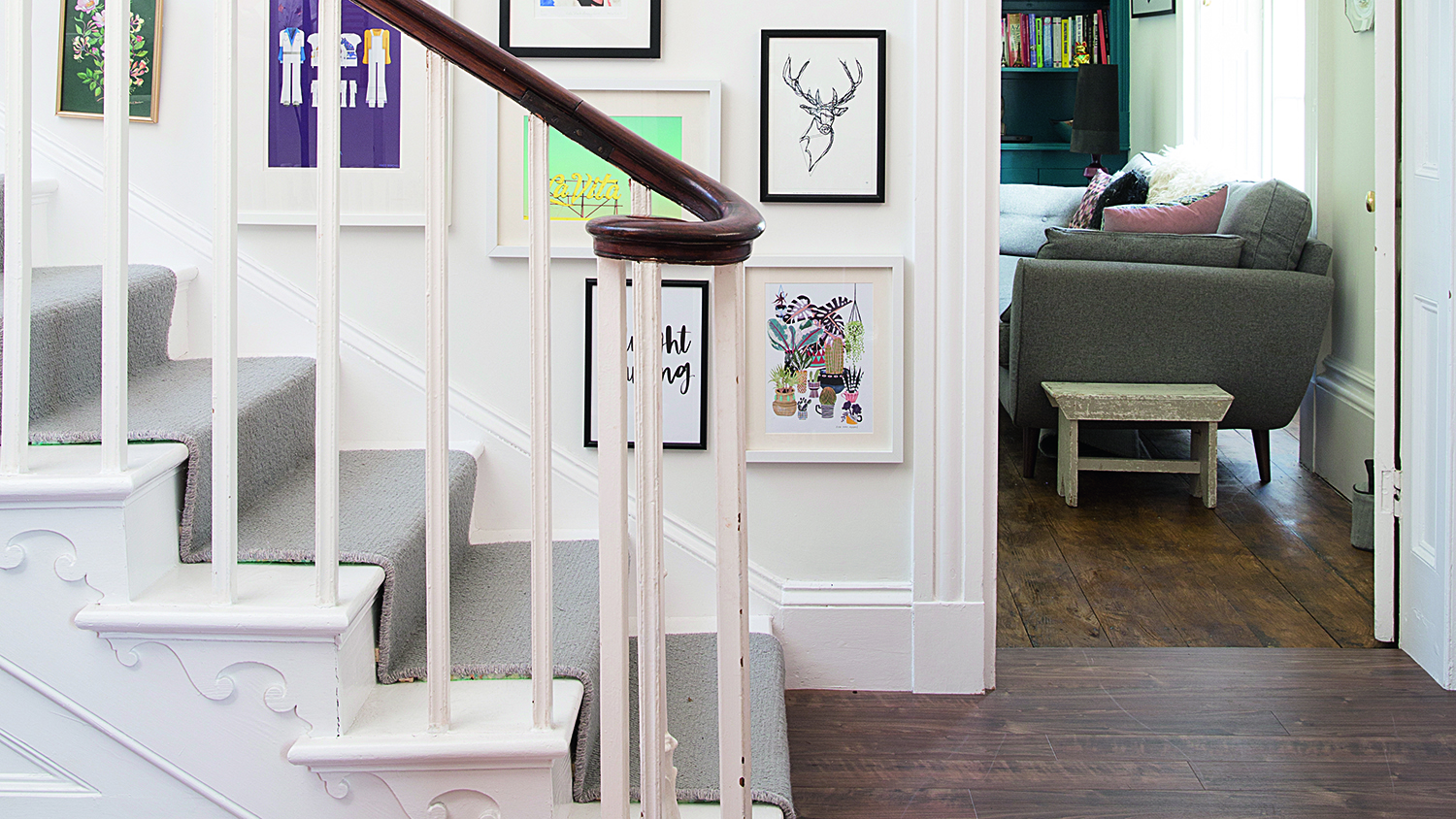

If you live in an older home it is like you will need to know how to restore architraves. These are the decorative lengths of wood that face door frames, windows and are often used round the top of a room – think skirting for the ceiling.
Wood moulding like architraves will usually have layers and layers of paint built up on them over the years, causing them to lose definition. They might also have faced some damage over time, needing dents repairing.
Here, we explain how to restore architraves, from stripping the old paint to finishing it to be good as new.
- For advice, inspiration and step-by-steps on all DIY projects, browse our decorating hub
With step-by-step instructions from experienced renovator Sian Astley, this guide and video talk you through how to strip paint from wood to ensure you get it right first time.
You will need:
- Paint stripper
- Small spatula
- Clean paint brush
- Plastic sheeting
- Masking tape
- Medium-sized scraper
- Coarse brush, such as a dish washing brush
1. Prep the architraves
First, you need to wipe away any dust from your woodwork using a damp cloth. If you're working on a door or door frame, either open the door or remove it from its hinges.
2. Apply PeelAway paint removal paste
Using a spatula, apply the specialist paint stripping product for timber, such as Peelaway, to the surface and spread evenly using a brush to reduce wastage and to make sure you get the paste into all areas.
3. Seal with plastic
Lay sections of plastic sheeting to the surface where the stripping product has been applied. Press gently to ensure adhesion.
Top tip: Do a small test patch before tackling the whole area to see how your paint and timber reacts to the specialist paint stripper. This will give you an idea of how long the process will take for your particular architraves and skirtings.
4. Leave overnight
Once applied, leave the area for at least 24 hours and then test a small area to see whether the paint stripper has sufficiently activated and the paint can be removed easily.
5. Scrape away the paint
Using a medium-sized scraper, gently scrape away the set paint stripper and paint. Use a dish washing brush to carefully remove excess. Continue until all paint is removed.
6. Finish the look
Once all the paint has been removed, sand the timber until smooth. Then, apply a primer, undercoat and your chosen paint shade.
Looking for more decorating advice?
Join our newsletter
Get small space home decor ideas, celeb inspiration, DIY tips and more, straight to your inbox!
-
 This colourful home makeover has space for kitchen discos
This colourful home makeover has space for kitchen discosWhile the front of Leila and Joe's home features dark and moody chill-out spaces, the rest is light and bright and made for socialising
By Karen Wilson
-
 How to paint a door and refresh your home instantly
How to paint a door and refresh your home instantlyPainting doors is easy with our expert advice. This is how to get professional results on front and internal doors.
By Claire Douglas
-
 DIY transforms 1930s house into dream home
DIY transforms 1930s house into dream homeWith several renovations behind them, Mary and Paul had creative expertise to draw on when it came to transforming their 1930s house
By Alison Jones
-
 12 easy ways to add curb appeal on a budget with DIY
12 easy ways to add curb appeal on a budget with DIYYou can give your home curb appeal at low cost. These are the DIY ways to boost its style
By Lucy Searle
-
 5 invaluable design learnings from a festive Edwardian house renovation
5 invaluable design learnings from a festive Edwardian house renovationIf you're renovating a period property, here are 5 design tips we've picked up from this festive Edwardian renovation
By Ellen Finch
-
 Real home: Glazed side extension creates the perfect garden link
Real home: Glazed side extension creates the perfect garden linkLouise Potter and husband Sean's extension has transformed their Victorian house, now a showcase for their collection of art, vintage finds and Scandinavian pieces
By Laurie Davidson
-
 I tried this genius wallpaper hack, and it was perfect for my commitment issues
I tried this genius wallpaper hack, and it was perfect for my commitment issuesBeware: once you try this wallpaper hack, you'll never look back.
By Brittany Romano
-
 Drew Barrymore's new FLOWER Home paint collection wants to give your walls a makeover
Drew Barrymore's new FLOWER Home paint collection wants to give your walls a makeoverDrew Barrymore FLOWER drops 27 brand-new paint shades, and every can is made from 100% post-consumer recycled plastic.
By Brittany Romano